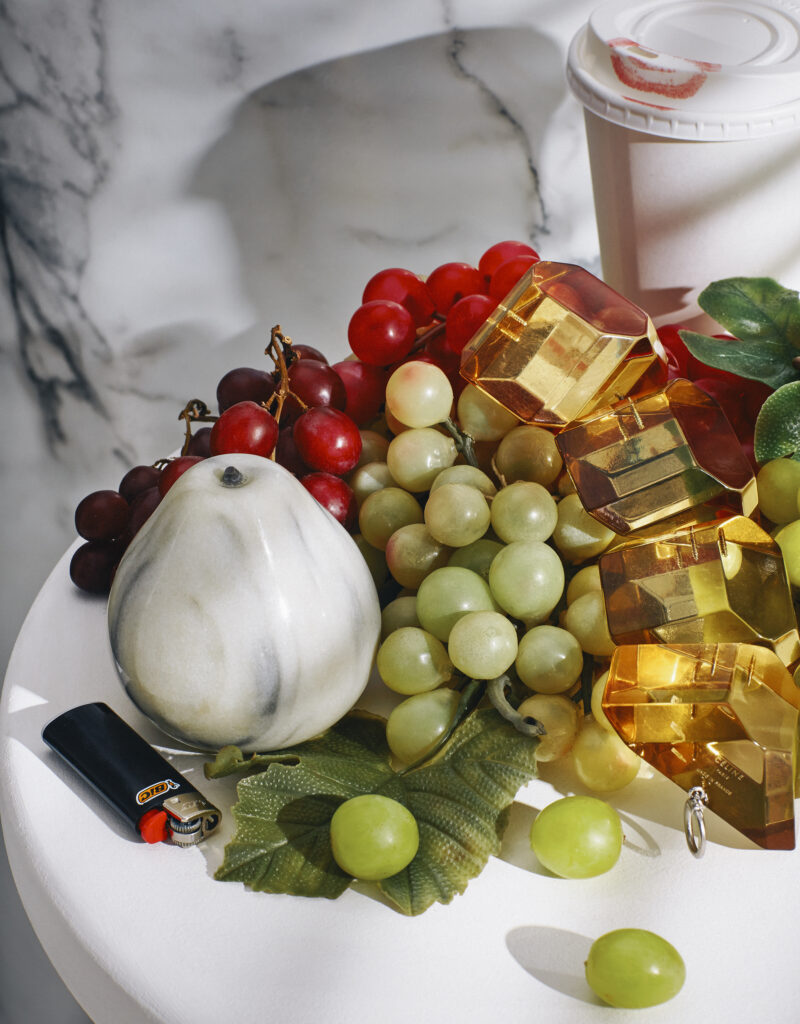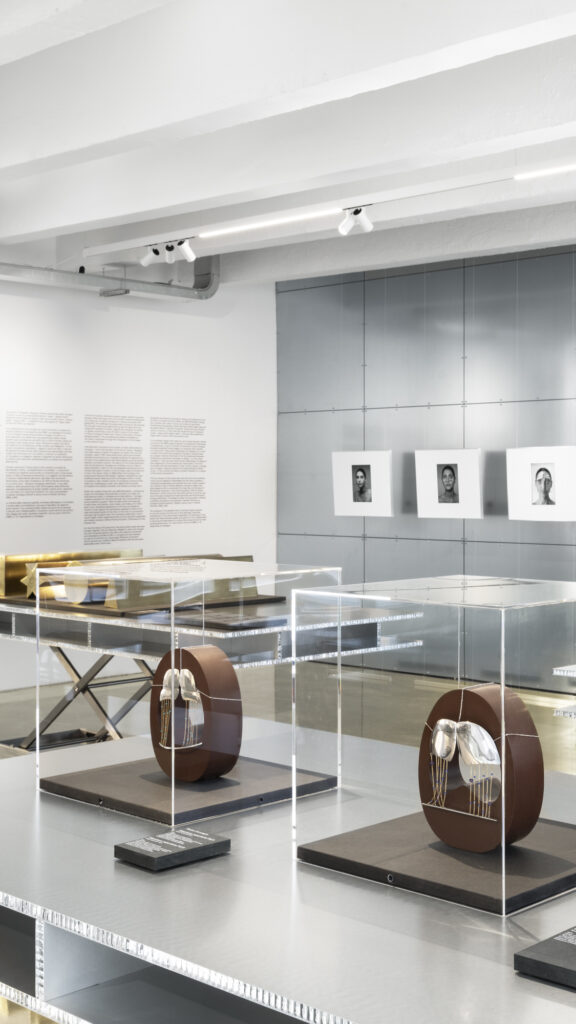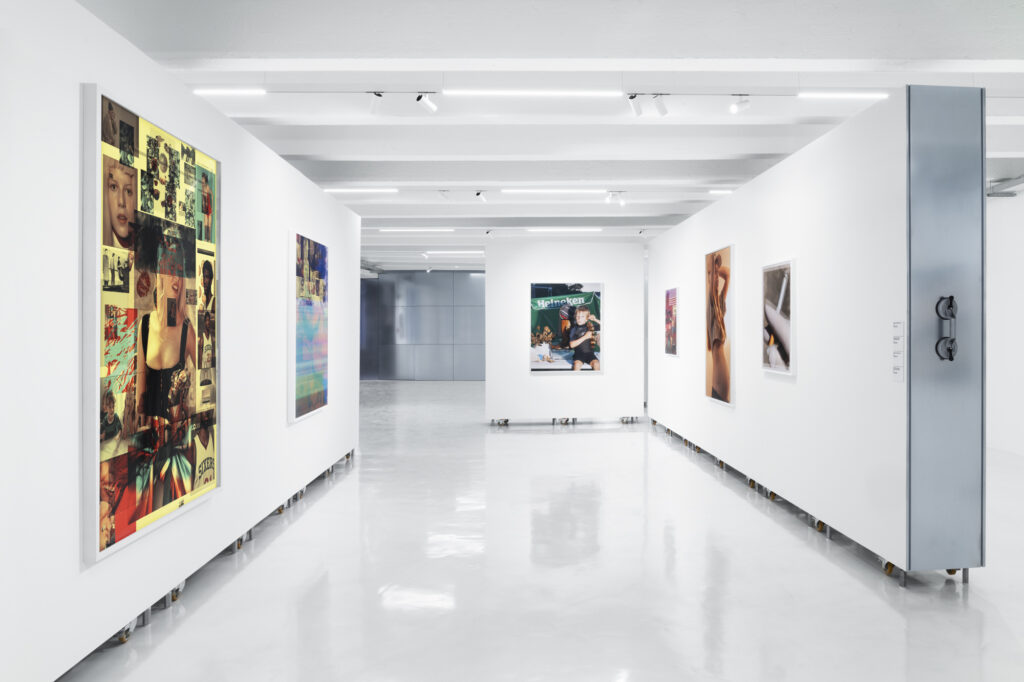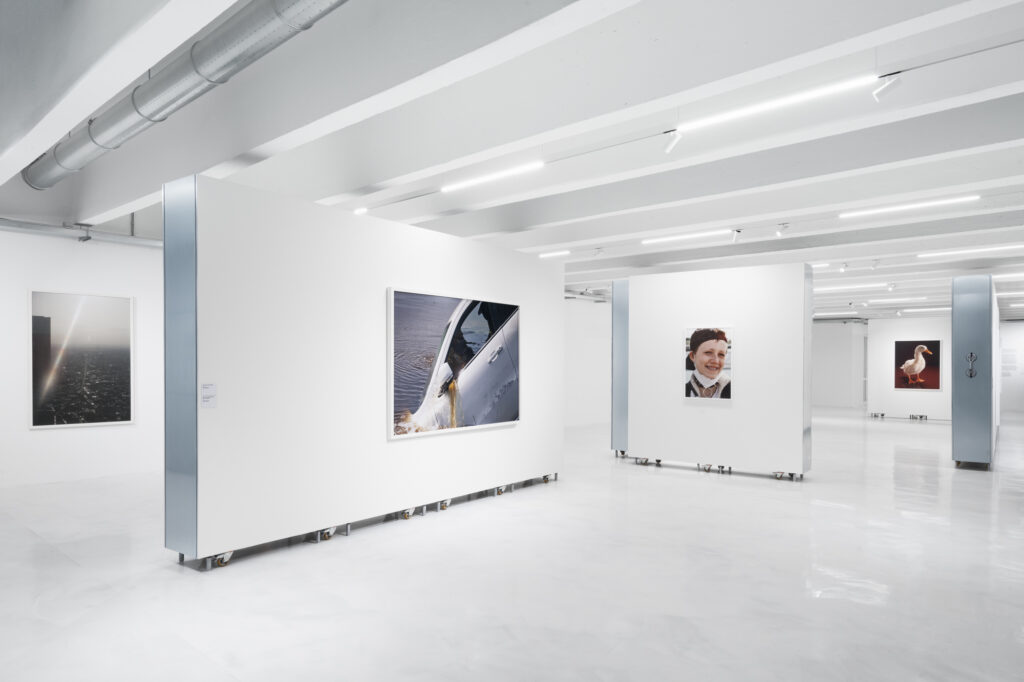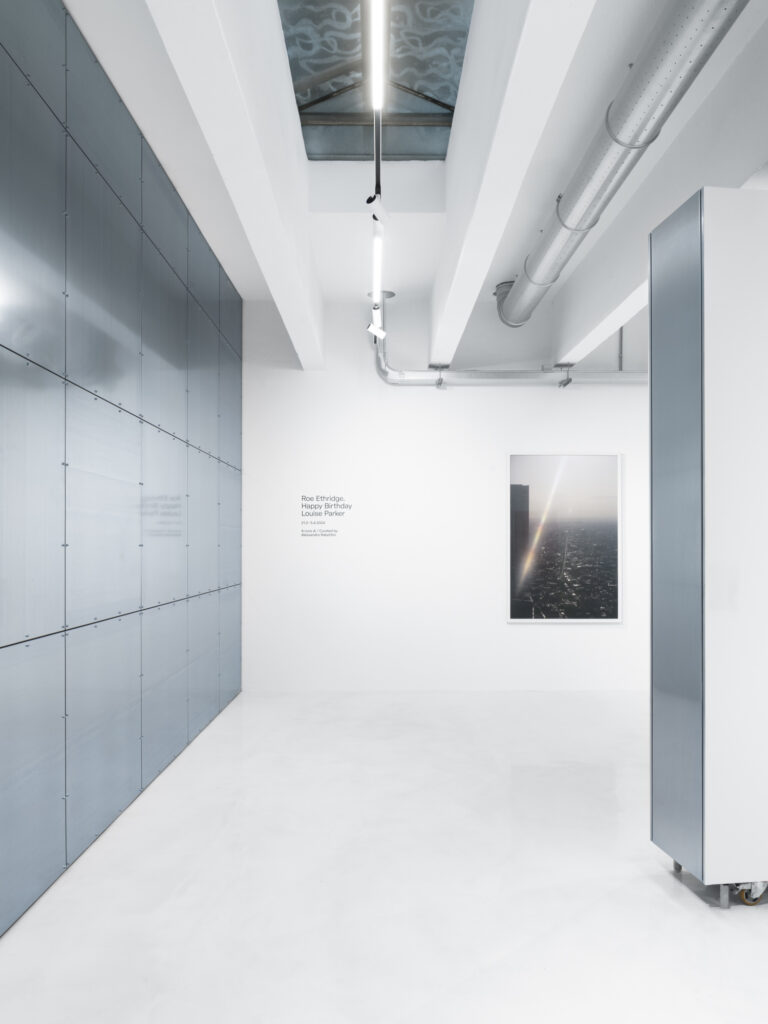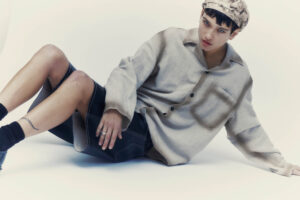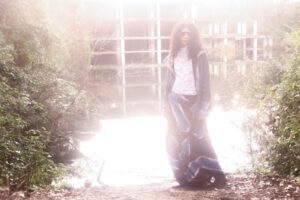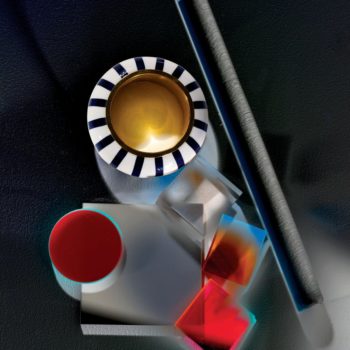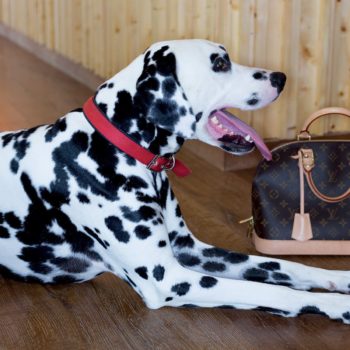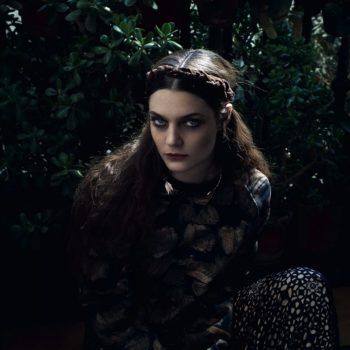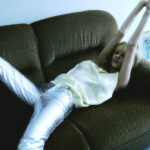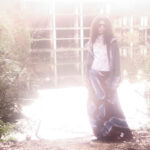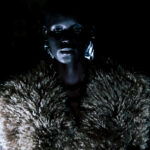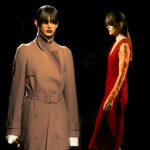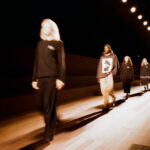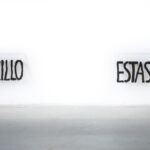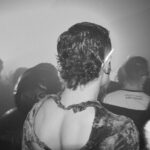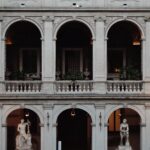10·Corso·Como presents
Gallery and Project Room
10 Corso Como unveils its newly redesigned Gallery and Project Room, reflecting Tiziana Fausti’s vision and executed by the interdisciplinary agency 2050+. The space now embodies a concept of “selective archaeology,” stripping away accumulated materials to reveal the original industrial character of the early 20th century. The renovation features movable walls, pantograph tables, and grandstands, facilitating versatility while maintaining a hybrid Wunderkammer design.
The Gallery showcases American artist Roe Ethridge’s exhibition “Happy Birthday Louise Parker,” curated by Alessandro Rabottini, displaying over thirty iconic photographs and large-scale works for the first time in Italy. Meanwhile, the Project Room functions as an adaptable space for exploring contemporary themes such as sustainability, activism, and human relations through archival research and technological innovation.
A highlight of the Project Room is the debut exhibition of Pietro Consagra’s face and body jewelry curated by Alessio de’Navasques, featuring pieces like Masks in silver and gold, the Bite in red gold, Eyebrow Ornament, and Navel Ornament alongside precious archival documents. This exhibition coincides with “The Alchemical Plane,” showcasing signature design pieces and rare books selected by Domitilla Dardi.
Tiziana Fausti expresses pride in initiating 10 Corso Como’s cultural program with innovative reflections on fashion, photography, art, and design. The redesigned spaces aim to serve as a dynamic platform for discussions on sustainability, human relations, art, fashion, and culture, embodying Fausti’s forward-looking vision for the concept store she acquired in 2020.
Pietro Consagra. Ornamenti
Curated by Alessio de’ Navasques, reconstructs a particular phase in Consagra’s practice: his collection of masks and body ornaments produced in 1969 in collaboration with the art jewelry workshop GEM GianCarlo Montebello.
Internationally renowned as the master of Italian abstractionism, Consagra – one of the founders of the Forma 1 group – designed and made pieces of jewelry throughout his career: from his first necklace, made in 1947 using sheet brass, which (as he himself claimed) served almost as a wearable manifesto for abstract art, through to his collaborations with Mario Masenza and the brothers Massimo and Danilo Fumanti. It was in the vibrant milieu of 1960s Milan that Consagra first encountered Giancarlo Montebello. Together, alongside the more traditional pieces featuring motifs and designs similar to those of sculpture, they created a series of conceptual ornaments in which the conceptual and political symbolism of the mask is expressed through the arrangement of the shapes on the wearer’s face.
Within the creative forge that was GEM, Consagra created ornaments for the face and body that transcended any purely aesthetic purpose. These included subtle interweavings of gold, silver, and stones, crown-masks, and bridles, all of which gave a new, fantastical appearance to the face and alluded to women’s revolt against the stereotypes assigned to them by the male-dominated society of the time, on the crest of a provocation that also had its playful side. The ornaments ended with a rod at mouth height, which looked almost like a bit but was both suspended and mobile; moreover, without forcing the point, it betrayed an ironic, sensual vein.
For the first time at 10·Corso·Como, the jewelry series for face and body has been brought together: the two Maschere (“Masks”) in silver and red gold, one with turquoise spheres, the other with spheres of amethyst and chalcedony; and Morso (“Bit”) in red gold and coral spheres; as well as Ornamento per sopracciglio (“Eyebrow Ornament”) and Ornamento per ombelico (“Navel Ornament”) with the two-piece detachable silver Cache-sexe. Alongside contemporary documents, essays, and publications from the Pietro Consagra Archive in Milan, the GEM Montebello catalog box compiles, like a deck of cards, rare photos by Ugo Mulas, the Milanese photographer whose black-and-white images captured Benedetta Barzini “wearing” the jewels. These shots soon became iconic; so much so, in fact, that they caught the eye of Consuelo Crespi – Vogue USA’s fashion editor – and were then published in Vogue Italia’s January 1970 issue, shown here.
In an exhibition design that makes its way through thematic islands, we come to the 1968 sculpture Spessori in prospettiva (“Thicknesses in Perspective”), a type of Inventari (“Inventories”) in which Consagra physically projected frontal images in an extension that resulted in a visual shift. These works foreshadow the buildings of La Città Frontale (“The Frontal City”) – devised by Consagra in the same year – and also reappeared in the Ornamento per sopracciglio, in the form of movable rods that terminated in a star, a circle, a square, a triangle, and a hexagon, veiling the eyes but not compromising the ability to see – in fact, actually providing a symbolic indication of a change in the woman’s perspective.
The two versions of the Cache-sexe mark the end of the exhibition route: one put together by Montebello and the other (probably a prototype) encapsulating more explicitly how even a body ornament can conceal an idea of female liberation, through an object that gives pleasure with no requirement for male input.
The mystique of the jeweled mask, archetypal enigma, became at once the symbol and the core of the seemingly irreducible contradiction in the male-female relationship: “An awareness of the reality that flows between people, and which for me is indispensable in removing the dead spots of a culture that moves forward on male consciousness alone,” as Lonzi wrote in Vai Pure, responding to Consagra.
Happy Birthday Louise Parker
Is the first solo exhibition in Italy by the American photographer Roe Ethridge (Miami, 1969) curated by Alessandro Rabottini. Of the language of photography, Ethridge explores historical implications and contemporary paradoxes, seamlessly navigating the realms of visual art and fashion photography through a distinctive and unconventional style.
In over 25 years of career, he has gained an international reputation with a practice that expands and conflates ideas of beauty, memory, commerce, and representation, questioning how images are produced and distributed as both objects of pure contemplation and as vehicles of persuasion.
Conceived especially for 10·Corso·Como, Happy Birthday Louise Parker brings together a selection of iconic photographs from the past 15 years alongside previously unreleased works, fusing themes and subjects that, at a first glance, may appear unrelated to each other: elaborate still lives, accurately staged fashion shots, melancholic landscapes, and intimate portraits. Images are skilfully juxtaposed to forge visual connections, unravel contrasts, and weave narratives, and despite the diversity of their atmospheres, what connects them all is a formal rigour that is as haunting as it is arresting, if not confrontational at times.
The exhibition draws its title from the alluring presence of Louise Parker, a model with whom Roe Ethridge collaborated with on the occasion of several fashion editorials starting from 2010. Throughout the years, the two became friends and Ethridge had the opportunity to portray Parker both inside and outside the framework of the fashion industry. We see the recurring, hypnotic image of Louise transitioning from highly stylised fashion spreads to more spontaneous, intimate portraits and back, manifesting the intertwining of life and representation, the everyday and the staged. In this collection of portraits, the gaze of the artist meets the self-aware gaze of the model, in a way that thematise and transcends the dynamic interplay between the photographer, the camera, and the subject, between the intentionality of the artistic vision and the intentionality of the pose.
In this narrative featuring Louise at various stages of her life, Roe Ethridge intertwines fragments of his own life story. These fragments include portraits of himself and his son, his salvaged car, and portraits of his children. Even within these familial scenes, Ethridge’s attention to composition and image economy is apparent, blending personal memories with a deep understanding of photography’s history. This personal world becomes a subject of temporal progression, reflecting the overarching theme of time passing.
The relationship between personal memories and fashion is explored through the installation of images in the exhibition space. Fashion, being ever-evolving, is juxtaposed with autobiographical pictures, highlighting its connection to transience and ephemerality. Ethridge captures the balance between creation and decay, pleasure and consumption, reflecting on the cyclical nature of life.
In some photographs, Ethridge reveals the behind-the-scenes operations of image selection and post-production, showcasing the continuous flux of images across different formats and functions. His practice is described as both energetic and contemplative, exploring the varied spaces occupied by the same image, from advertisement to mundane elegy.

